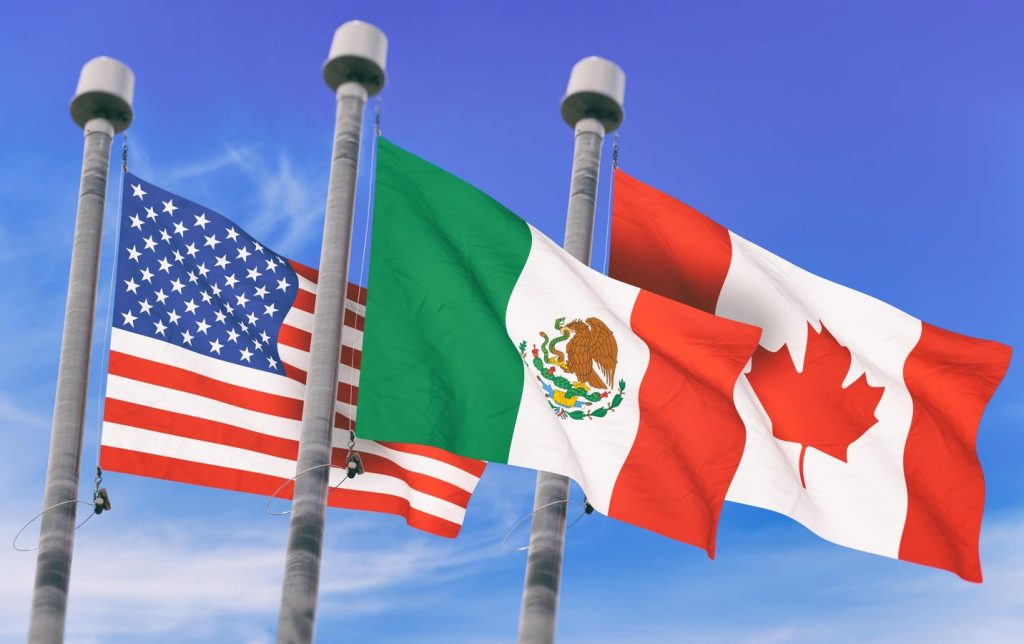As families celebrated Thanksgiving last week, a notable development emerged for consumers: the cost of the traditional Thanksgiving feast saw a decrease for the second consecutive year, costing an average of $58.08 for a dinner serving ten people—a 5% drop from the previous year, as reported by the American Farm Bureau Federation (AFBF). However, this apparent reprieve should be viewed with caution, as overall costs remain about 20% higher compared to five years ago. This backdrop raises concerns about potential future price increases, especially in light of President-elect Donald Trump’s proposed tariffs on imports from major trading partners, including China and Mexico. These tariffs, if implemented, could reverse the trend of falling food prices and lead to increased costs for consumers.
The proposed tariff policies by Trump, featuring a sweeping 60% tariff on goods imported from China and a 25% tariff on items from Mexico and Canada, may have a direct impact on consumer prices. The rationale behind such protectionist measures is to support domestic industries, but historically, tariffs have resulted in higher consumer costs. Most economists predict that these tariffs would be effectively passed on to consumers, acting as a form of taxation on imports. The anticipated impact of these tariffs could vary, with estimates suggesting that a 10% tariff on all goods entering the U.S. might raise overall prices by around 1.3% annually, complicating the economic landscape for American consumers.
Drawing from historical precedents, the consequences of tariffs can be significant and swift, as illustrated by the washing machine tariffs imposed during Trump’s first term. From February to May 2018, prices for laundry equipment surged by 16.4%, amounting to a $100 increase per washing machine and dryer within a year. Furthermore, broad trade tensions, particularly with China, contributed to rising costs across various consumer goods, translating to approximately $3.2 billion in additional monthly taxes for American families. If Trump’s tariffs take effect, similar price escalations could ensue, prompting consumers to pay noticeably more for everyday items, such as jeans and tricycles.
The implications of these tariff proposals extend beyond Thanksgiving dinner prices. For consumers, it may make sense to stock up on items expected to be affected by tariffs, including apparel, household appliances, toys, and travel goods. This foresight may help mitigate some of the financial burden associated with rising prices. For investors, monitoring these changes is crucial, particularly within industries vulnerable to import-dependent supply chains, including retail, electronics, and agriculture. A disruption in trade relations with countries like China, Mexico, and Canada could have a cascading effect across various markets, creating uncertainty for businesses and investors alike.
While some industries may struggle under the weight of increased tariff-related costs, opportunities may also arise. Domestic manufacturing firms, particularly those that can capitalize on reduced competition from foreign imports, could experience heightened demand. For instance, steel producers like Nucor and U.S. Steel may benefit from higher prices for imported steel, while scrap metal recycling firms could see a rise in profitability as manufacturers seek alternative sources due to climbing material costs. This would suggest a shifting landscape where companies less affected by international trade dynamics may thrive, contrasting the challenges faced by heavily dependent import sectors.
As 2023 unfolds, the potential continuation or modification of Trump’s tariff proposals will likely dominate financial news. The economic ramifications of these policies will be far-reaching, impacting consumers and the broader economy. As preparations are made for the upcoming year, awareness and proactive financial planning will be critical for individuals and investors navigating an environment shaped by tariffs. At U.S. Global Investors, careful observation of these developments is essential, encouraging diversified strategies to counterbalance the influences of tariffs and ensure preparedness for whatever economic challenges may arise. Happy holidays!

